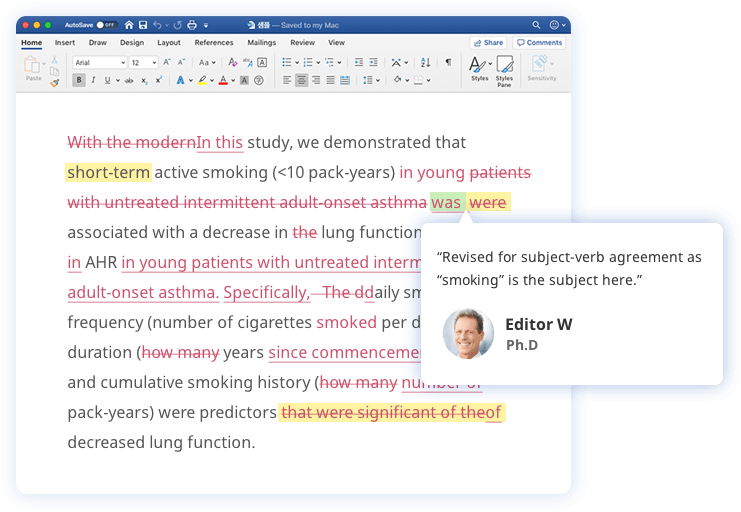如何使用介系詞
介系詞是描述單字之間關係的詞。介系詞能夠描述某物或某人的位置。
- 例句
- The cup is on the table.
在上例中,介系詞“on”描述了杯子和桌子之間的關係。介系詞也能描述事件發生的時間和方式。
- 例句
- I arrived before him.
- 例句
- I arrived by bus.
在上例中,介系詞“before”描述的是“I”何時到達的時間與“him”有關,而介系詞“by”表示的是乘坐“bus”是到達的方式。
- 例句
- The purpose of this study was to develop a highly heat resistant composite with a carbon fiber base.
- 例句
- A book is for reading.
介系詞的分類
| 介系詞的種類 | 介系詞的作用 | 介系詞示例 |
|---|---|---|
|
簡單介系詞 |
用於描述位置、地點或時間 |
at, for, in, by, off, on, over, under |
|
雙介系詞 |
兩個簡單介系詞連用,通常用於指示方向 |
into, onto, upon, up to, inside, outside of, out of, from within |
|
複合介系詞 |
兩個或兩個以上的詞連用,通常由一個簡單介系詞和另一個詞連用,用於表示位置 |
in addition to, in front of, at the back of, along with, alongside of, in comparison to, in contrast to |
|
分詞介系詞 |
分詞當作介系詞使用 |
considering, including, excluding, during, regarding, provided |
|
片語介系詞(介系詞片語) |
包括介系詞、受詞和受詞的修飾語 |
for example, for instance, on time, under the influence of |
簡單介系詞
簡單介系詞描述兩個詞(通常是名詞)在位置或時間上的關係。常用的簡單介系詞包括:at, for, in, by, off, on, over, under。
- 例句
- The sample was placed under a microscope.
- 例句
- We have added additional information in the revision.
- 例句
- The board meeting starts at 9:00 am.
- 例句
- The sample was placed under a UV light for 30 minutes.
雙介系詞
雙介系詞通常表示方向,由兩個簡單介系詞組成。常見的雙介系詞包括:into, onto, upon, up to, inside, outside of, out of, from within。
- 例句
- We ran into the apartment.
- 例句
- Progressively higher weights were placed upon the composite.
- 例句
- The man walked up to the officer.
- 例句
- Strange groans came from within the box.
複合介系詞
複合介系詞表示位置,至少由兩個詞組成。常見的複合介系詞包括:in addition to, in front of, at the back of, along with, alongside of, in comparison to, in contrast to。
- 例句
- In addition to the tests to evaluate heat resistance, we also submerged the samples in water to test their varying degrees of hydrophobia.
- 例句
- I left the package in front of the door.
- 例句
- He picked up a soda along with the pizza.
- 例句
- Sample 1 demonstrated high heat resistance in comparison to sample 2.
分詞介系詞
分詞介系詞是作為介系詞使用的分詞。它們以“-ed”或“-ing”結尾。常用的分詞介系詞包括:considering, including, excluding, during, regarding, provided。
- 例句
- Considering its high protein content, the sample’s resistance to heat was surprising.
- 例句
- All of the samples, including the gold composite, were moved to a vacuum chamber.
- 例句
- The professor talked about chirality during her lecture.
- 例句
- The class will begin in five minutes, provided that all students are present.
片語介系詞(介系詞片語)
片語介系詞(又稱介系詞片語)由介系詞、介系詞的受詞和修飾受詞的詞組成。片語介系詞通常以這些詞開頭:in,over,under,during,from,for,behind,before,after,at,for,about,to,of,with。常用的片語介系詞包括:for example, for instance, on time, under the influence of。
- 例句
- They arrived at the restaurant on time.
- 例句
- You should not drive under the influence of alcohol.
- 例句
- For example, composite A did not degenerate when heat was applied.
- 例句
- She appreciates the flowers from her children.
想知道英語母語編級的專業意見?馬上試用英文編修服務!

- 學術論文
- 留學文件
- 求職履歷
- 商業文件
- 部落格和網站文案
- 個人隨筆
用介系詞結束句子
人們通常認為句子不能以介系詞結尾。這種假設其實不對。有時,在句末不使用介系詞會造成句子不夠自然流暢。
- 不自然
- Is this the movie about which you told me?
- 自然
- Is this the movie you told me about?
另外,把介系詞移到句子中靠前的位置能夠使句子顯得更加正式。
- 非正式
- What journal was your last paper published in?
- 正式
- In which journal was your last paper published?
在上例中,這兩個句子都正確,但後一句比前一句更加正式。因此,在學術寫作中,介系詞很少用在句子末尾。
- 非正式
- This is a topic we previously wrote about.
- 正式
- This is a topic that we discussed in a previous paper.
當把介系詞移到句子中靠前的位置時,需要注意去掉在句子末尾的介系詞。
- 錯誤
- In which journal was your last paper published in?
- 正確
-
What journal was your last paper published in?
In which journal was your last paper published?
避免不必要的介系詞
像形容詞一樣,介系詞也經常被濫用,即使母語是英語的作者也如此。濫用介系詞包括兩種情況。第一種情況是在句子中錯誤使用介系詞。
- 錯誤
- Where is the other student at?
- 正確
- Where is the other student?
在上例中,介系詞“at”在語法上是多餘和錯誤的。 第二種情況是句子結構的寫法不好,使用了太多介系詞。
- 例句
- An understanding of gold composites is necessary for any company in the semiconductor industry at this time.
這種句子最好在結構上重寫,使得無需使用那麼多介系詞,示例如下。
- 例句
- Understanding gold composites is necessary for companies in the semiconductor industry.









